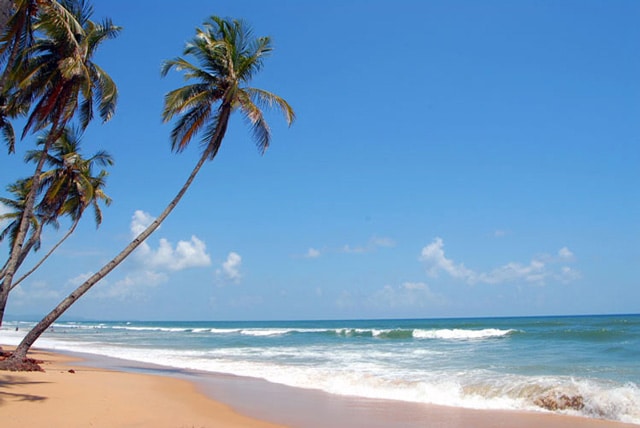Colva is a famous tourist destination, visited for its beaches, budget hotels, guest houses, beach shacks, food stalls, restaurants, pubs and bars. Located in Salcete, South Goa, Colva is a coastal village on the west coast of India. Goa is famous as the ‘party’ city of India. ‘Discovered’ as a party spot first by the hippies in the 70s, Goa has never looked back.

Colva, located in the southern coastal belt of Goa, was originally a vast barren uninhabited land with a scenic view of the Arabian Sea. Colva beach stretches for around 2.4 km, part of a beach consisting of about 25 kms of powder white sand. Lining this splendid shoreline are exotic coconut palms which Sebastiao Jose Roiz had ordered the village people to plant in the 18th century. Sebastioa was a descendant of D. Diogo Rodrigues, who was the Lord of Colva (Landlord of Colva) since 1550. He built the first Portugese architecture residential house in 1551 facing away from the sea and at a distance from the shore to avoid any enemy attacks from the Arabian Sea.
Climatic Conditions
Colva features a tropical monsoon climate, being hot and humid for most of the year. The month of May is the hottest, seeing day temperatures of over 35 C, along with high humidity. The monsoon rains arrive by early June and provide a much needed respite from this heat.
Best Time to Visit
Colva has a short winter season between mid-December and February. The best time to visit begins with the Fama festival and lasts till the end of the winter season in February.
Accommodation options include all categories of star hotels, apartments, villas, resorts and guesthouses. Most of these offer instant confirmation when you make a reservation. They also mostly offer free cancellations on most rooms. If you plan to go during either the Fama festival time or at the busy Christmas and New Year Holiday season, it is always advisable to book early.
Getting there
Colva is 8 km from Margao and 40 km from Panajim. The closest railway station is in Margao followed by Vasco da Gama, Goa. The nearest airport is Dabolim Airport at Vasco da Gama.
Colva is well connected by air, rail and road. The languages spoken in Colva include the local Saxtti dialect of Konkani. This is primarily written in the Latin script in Colva, as oddity you would likely not find elsewhere. Portuguese is spoken by the elite and older generations including the ones with Portuguese ancestry. English is the common language here, spoken by all. Hindi is spoken by migrants after the annexation of Goa with India.
Attractions
Colva is still famous for the white-washed Our Lady Of Mercy church, also known as Igreja de Nossa Senhora das Merces, that was founded in 1630 and rebuilt in the eighteenth century in the village square. The miraculous statue of ‘Menino Jesus’ (Baby Jesus) is housed within. According to local legend, this statue was found in the mid-seventeenth century along the Mozambique coast by Rev. Fr. Bento Ferreira after he was shipwrecked there. He spotted it when he swam to safety. It had been washed ashore after being dumped into the sea by Muslim pirates. In 1648 when Father Ferreira was posted to Colva, he placed the statue on the altar. It soon started granting favors, drawing large crowds of devotees. The Menino Jesus statue is kept for public viewing in October for the annual Fama (‘Fame’) festival when thousands of pilgrims visit. This is the only time that it is removed from the triple-vault locks of the Church.
Colva had significant importance to the Portuguese and was the retreat for Goa’s high society, who would come to Colva for their “Mundanca” or change of air. Today the Portuguese area is dotted with houses or villas, including many ruins.
The beach is particularly busy in October, during the Fama festival. The beaches are constantly monitored by lifeguards, and the swimming areas are flagged for warnings.

